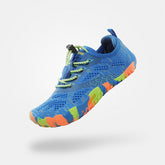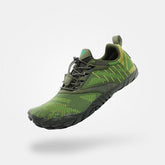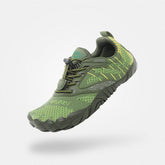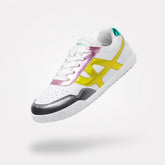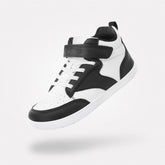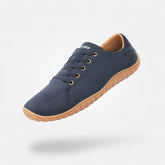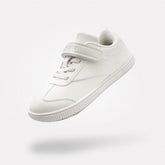My Journey with Saguaro on the West Highland Way #0015
This story was submitted by Dominik.

From Expensive Hiking Boots to Barefoot Ease
Three years ago, I walked the West Highland Way in Scotland with friends. I had prepared for a long time and bought expensive equipment.
My plan was to rely on my €350 Lowe hiking boots to handle the unpredictable UK weather. I also packed a pair of minimalist shoes to rest my feet in the evenings.
However, by the end of the first day, I realized the Lowe boots were a mistake: they were very heavy and, once wet, took a long time to dry.
From day 2 to 7, my Saguaro shoes became my everyday footwear. They also got wet, but because they had no pressure points, I didn’t get any blisters. Thanks to the warmth of my feet, they dried quickly as well.
The variation in foot load and the lightness of the shoes made the hike a great experience. I just wish they had a bit more grip. ;)
Why I Came Back to Saguaro
In the year after that trip, I tried other competing models, but eventually returned to Saguaro because the fit, quality, and price were simply perfect.
Compared to others I’ve tested, Saguaro shoes dry very quickly and don’t slip off the foot, thanks to the higher heel cut. The soft material and especially the padded heel collar also prevented blisters—even with wet socks and shoes.
Later, I discovered that Saguaro is the only brand I can wear with custom insoles without my feet slipping out while walking.
I only wish the outsole had better traction, perhaps one from Vibram or, even better, Unparallel. A velcro strap at the top edge would also be a welcome addition.
My Barefoot Verdict: Pros and Cons Compared to Traditional Hiking Boots (Class B/C)
Unlike Class B and C hiking shoes, barefoot shoes have a very flexible sole. This brings both advantages and disadvantages:
Disadvantages:
-
There’s a higher risk of rolling your ankle (especially for untrained or inattentive walkers)
-
Sharp stones are more noticeable underfoot
-
Thinner, softer soles wear out faster
-
Lack of cushioning makes long walks on asphalt (>10 km) more tiring or uncomfortable due to repetitive stress
Advantages:
-
The wide toe box ensures good blood circulation in the feet
-
Lightweight shoes save energy and reduce back strain
The US military found that 1 kg on the foot equals 5 kg in the backpack in terms of energy and joint stress.
-
Barefoot shoes protect joints in two ways: lower weight and a more mindful gait reduce repetitive impact on the same spot, minimizing inflammation risk
-
Feeling sharp stones wasn’t a downside for me—it actually helped loosen tension in my soles, like acupressure while walking
-
The claim that it’s easier to roll your ankle in barefoot shoes is only partially true. I personally tore four ligaments in my ankle, and barefoot shoes plus slacklining helped me rebuild stability and confidence. Feeling the ground better means walking more mindfully, which improves posture (knees, hips) and activates stabilizing muscles
Want to share your unique experience or personal achievement?
Write to us at community@saguaro.com
Join SAGUARO community and inspire others with your story!



















